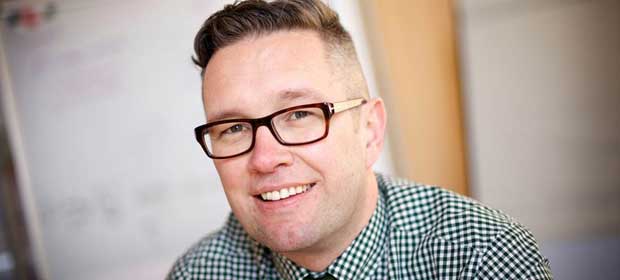If the delivery of health care becomes reliant on technology then technology must meet that need, writes Richard Corbridge, HSE Chief Information Officer.

One of the most critical parts that must be carefully considered when creating an eHealth fabric for any care delivery system is not the latest innovation but actually how will the system react under the worst case scenario. Many systems deployed in the public sector have breached key project management quality criteria (time, cost and quality) due to the need to have a system that meets very, very high levels of availability, but in some cases those high levels of availability have not been built against a business back drop but simply a series of assumptions.
In health this is different; if the delivery of health care becomes reliant on technology then technology must meet that need!
Once eHealth is part of the delivery of health care for a country it can’t be stopped. Imagine me in my role explaining to the department or minister’s office that this is not a once off investment; it’s not a project that ends. Investment in technology to support health care delivery is now part of the funding needed to deliver health.
Ireland took a giant leap of faith in 2015 that will begin to reap dividends in 2016
In Ireland we have an accepted and approved strategy (eHealth Ireland from 2014) we have an approved plan to deliver this strategy (Knowledge and Information Plan from 2015) but we don’t have a funding profile beyond 2016 or a clearly articulated delivery vehicle for technology beyond the existence of the Health Service Executive which is said to now be on its final delivery focused journey. However Ireland took a giant leap of faith in 2015 that will begin to reap dividends in 2016. It was a simple leap, that if technology is deployed into the system it needs to be done so against a back drop of reliability and functional requirements; not new technology for the sake of technology.
Chris Hadfield in An Astronaut’s Guide to Life on Earth comments, “Focus on the journey, not on arriving at a certain destination. Keep looking to the future, not mourning the past.”
This we feel is a great mantra for us to adopt for the delivery of eHealth Ireland. We need to take the permission derived from the strategy and plan and ensure that focus is applied to the benefits that can be released and in incremental steps that provide new benefits to patients and clinicians every step of the way.
For the first time in a decade the technology team of the HSE has permission to add resource to its headcount. This gives the team capacity to move at a relatively agile pace to implement the content of the Knowledge and Information Plan. It allows the momentum around clinical engagement to be continued and will see the view of the future coming into reality.
The founder of Turntable Health in the US this month commented, “We’re in this sort of weird limbo where the technology is expected to do the heavy lifting, but we haven’t really transitioned the human relationship… it’s gone.”
Zubin Damania is clear in his comment that there is a need so well-articulated through the US experience in the last year to ensure where health care IT is implemented the clinical engagement needs to be kept at the top of the priority list. The eHealth team in Ireland continues to place this at the heart of what it does. The appointment of the Chief Clinical Information Officers’ council and now the leader of this group sitting on both the senior management team of the HSE Office of the Chief Information Officer and the eHealth Ireland Committee ensures that the voice of the clinician is so prominent in all that is being considered. This type of open and transparent governance will be added to in 2016 to include the patient voice, currently this is well covered with relationships with IPOSSI (Irish Platform for Patients Organisations, Science and Industry) and the like, but we know more can and should be done in this space. An initial step into this area are the public consultation pieces, one has already been started in the area of the Electronic Health Record and has seen a phenomenal response, a further consultation is underway on the Privacy Impact of the Individual Health Identifier.
As Chief Information Officer I have an ambition that I have been criticised for in the last year. That ambition is to not have any IT projects by 2020. This is not because we see IT being ‘finished’ in health in Ireland but because projects should be clinical or business change or continuous improvement projects, within those projects technology and/or information should be a part, not the raison d’être for the project.
Successful CIOs will need to be more effective at managing the holistic technology and data environment regardless of who ‘owns’ the resources
Recently the CIO of New Relic Inc., Yvonne Wassenaar, was quoted in a similar vein, “Successful CIOs will need to be more effective at managing the holistic technology and data environment regardless of who ‘owns’ the resources”
The office of the CIO within the HSE sees Yvonne Wassenaar’s comments here as being crucial to the ultimate position of the new resources within the team, this new capacity will not be seen as simply more technologists, the capacity will be the resource needed to bring benefit from technology and information within health in Ireland.
An exciting start to 2016!

